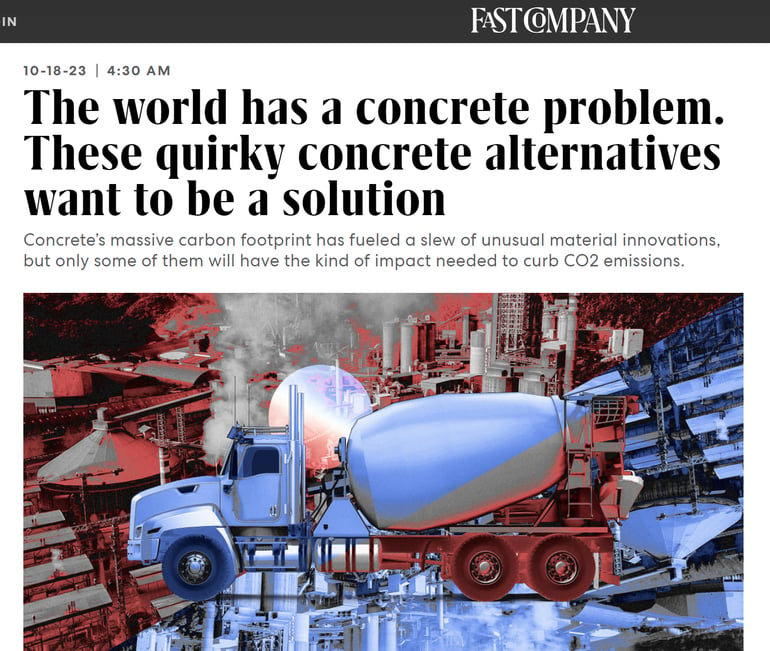Seratech in Fast Company Magazine
Concrete’s massive carbon footprint has fuelled a slew of unusual material innovations, but only some of them will have the kind of impact needed to curb CO2 emissions.
ELISSAVETA M. BRANDON
10/19/20232 min read


The concrete industry is having a bit of a reckoning. As the world’s most ubiquitous construction material, concrete contributes about 8% of global carbon dioxide emissions. About 30 billion tons of concrete are produced every year, which is three times more than it was 40 years ago.
This has fuelled a slew of innovations as researchers and companies strive to produce lower-carbon alternatives. Some are looking to the past: the deep tech startup Dmat, for example, makes self-healing concrete inspired by Ancient Romans. Others are looking to the future: a team of researchers at Northwestern are developing “Martian concrete” that doesn’t require water and is more than twice as strong.
Over the past few decades, researchers have also experimented with volcanic ash, carbon black, rice husk ash, algae, and even human hair. These experiments often make the headlines (including our own), but according to Christopher Cheeseman, a professor of materials resources engineering at Imperial College London, few are bound to have the kind of global impact we need to curb concrete’s carbon footprint. “You can take coffee grinds and put them into concrete, and maybe you can make something locally that is quite clever, but it’s going to have zero impact globally,” he says.
Mixing shredded diapers in concrete provides an intriguing opportunity to help divert diapers from landfill. And ground coffee could replace a portion of the sand that is used to make concrete, therefore reducing the impact of sand mining, which can damage river and coastal ecosystems. But for Cheeseman, there just aren’t enough of these ingredients on the planet to make a big difference. Instead, he says, researchers should focus on materials that are available all around the world, like limestone, clay, demolition waste, and silicate minerals that make up about 90 percent of Earth’s crust.
The primary culprit behind concrete’s overwhelming carbon footprint is Portland cement—the powdery binder that acts as glue and binds together the other ingredients in concrete. Cement, however, emits loads of carbon during its creation process and requires tremendous amounts of energy to produce as it is made by heating limestone and other materials at over 2,640 degrees Fahrenheit, in kilns that are mostly powered by fossil fuels.
To make lower-carbon concrete, some companies, like Solidia or Heirloom Carbon, are taking CO2 from the air and storing it into concrete. Others are using kilns that are powered by the sun, the wind, or even hydrogen. According to Cheeseman, all have the potential to reduce carbon emissions, but because cement is the biggest culprit, cementitious alternatives can have the biggest impact.
Cheeseman notes several companies worth watching in this field. Seratech replaces some of the cement with a type of silica that is created with CO2 captured directly from factory ducts. Blue Planet Systems does something similar by diverting CO2 from power plants then using it to manufacture aggregates for concrete. Meanwhile, the California-based company Brimstone is using calcium silicate rocks, which are 200 times more abundant than limestone. Elsewhere, technologies like LC3 are gaining momentum, as well. LC3 stands for Limestone Calcined Clay Cement and could reduce emissions by up to 40% compared to ordinary Portland cement.
Ultimately, clay or limestone may not have the shock value of used diapers or the cool factor of ground coffee, but they’re available globally, and that’s the most important part. “The growth in concrete isn’t in the U.S., it isn’t in Europe, it is in Southeast Asian countries and developing countries globally,” says Cheeseman. “They’re the people who would need the infrastructure and clays are generally available in those countries.”
